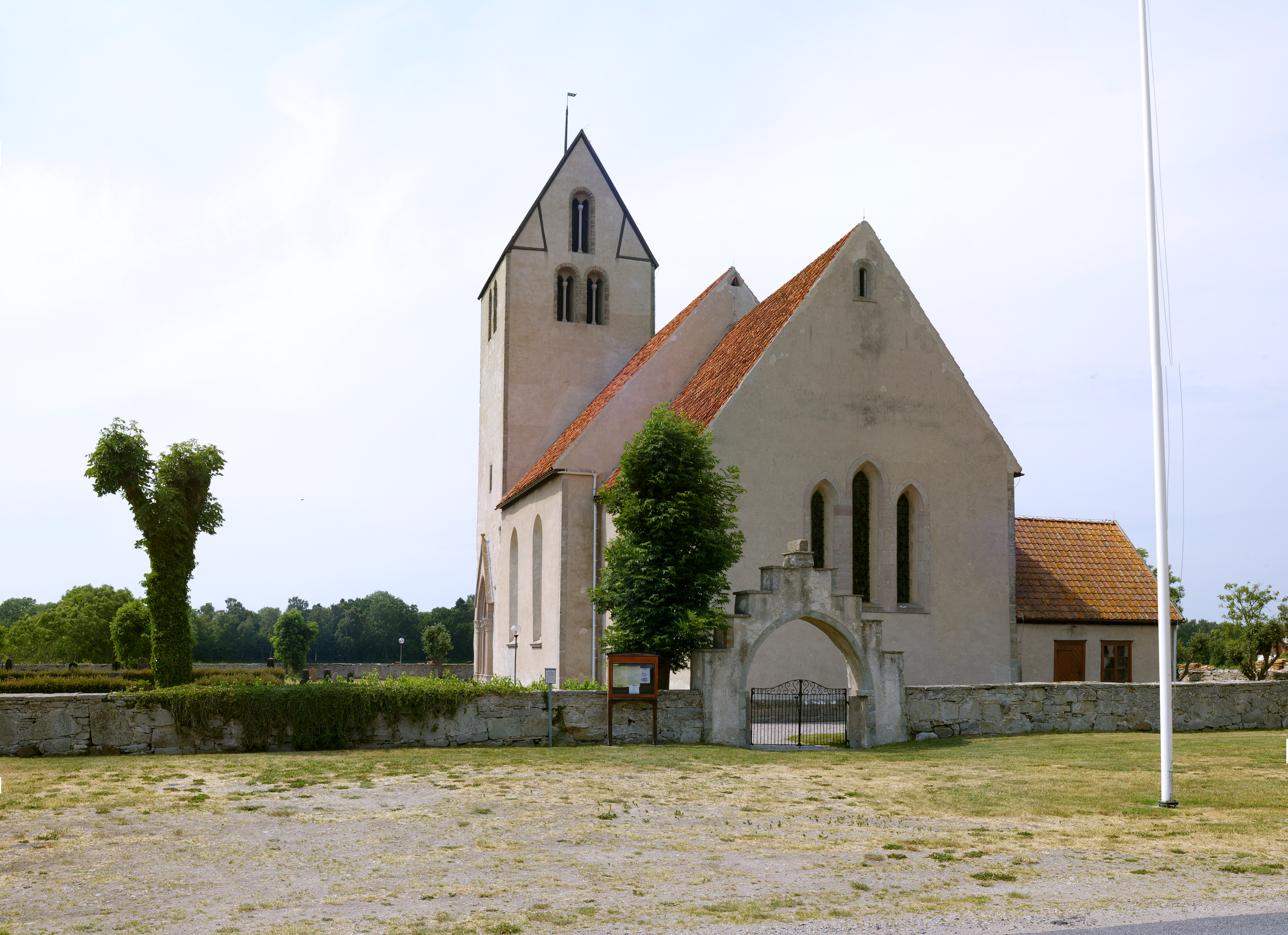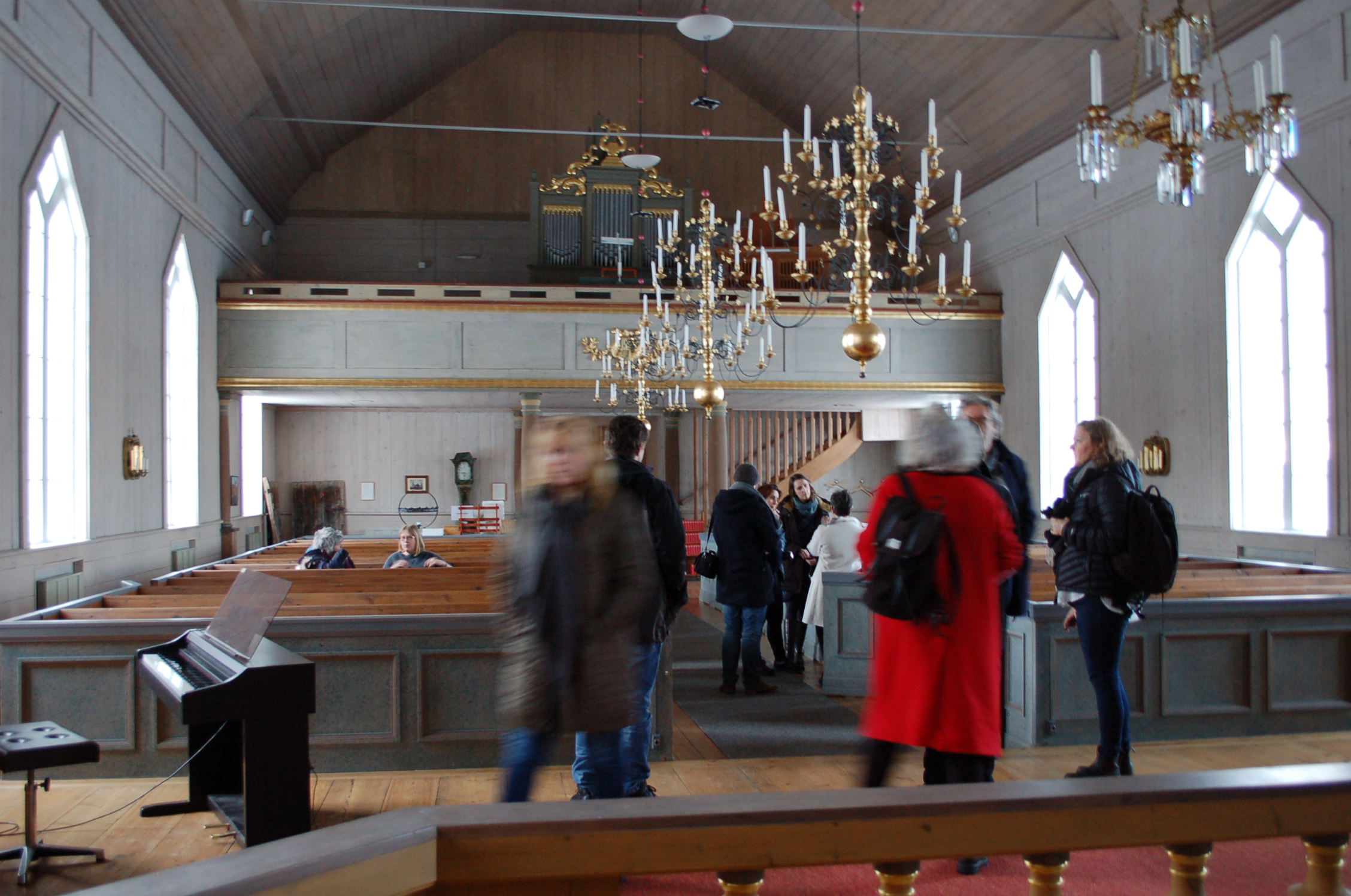”Elevated above time’s swift passing, and still part of contemporary life. Tradition and renewal, safeguarding and change, these are concepts that have always characterized the Cathedral and its’ surroundings.”

This passage introduces the call for applications to the 2017 architectural competition to create a new landmark building adjacent to the medieval Cathedral of the Swedish city of Strängnäs. The competition has garnered international attention, and 97 applications have been submitted by architects hoping to make their mark in the historic city center of a small Swedish city. How come a high-profile development project is launched as the number of worshippers in the traditional Christian congregations is decreasing in Sweden and western Europe, and many parishes face dwindling funds to maintain their churches? During recent years an increasing number of projects aiming to find new models to protect and develop the heritage of historic churches have emerged, where the heritage field and the Christian congregation find themselves in collaborative situations. Although heritage actors and the Christian congregations both aim to safeguard historic churches, difficulties of balancing use and protection may occur in real-life situations. These situations are the point of departure of my PhD-project. I am exploring how recent development projects in Sweden transforms professional roles and obligations, and how the heritage of historic churches are being constructed and used in different contexts.
Starting off with a brief introduction to the Swedish context, the Church of Sweden ceased to be State Church in the year 2000, which also marks the year of a new heritage regime in Sweden. The overall organization of the heritage management of historic churches is a collaborative effort of the Church of Sweden and the State Heritage Authorities. While the individual parishes own, and have the responsibility of safeguarding their churches, regional heritage authorities ensures that these tasks are being properly carried out, and that transformations of historic churches do not interfere with the cultural-historical values. Additionally, the Church of Sweden receives a yearly State Grant amounting to €46 million, to cover the increased costs of heritage management. In a European perspective, relatively few historic churches have been sold or demolished in Sweden. The two case studies represent development projects where collaborative situations is a key part of the project’s strategy. Geographically the projects are located in different parts of Sweden, representing the different contexts of Swedish churches.

Hamra Church is the object of the first project. This late 18th century gothic-revival parish church is located in the village of Hamra, a community that currently has about 70 permanent inhabitants. Currently, the church is very rarely used for services. The village is located in the remote inlands of mid-Sweden, that are traditionally characterized by the forest industry, hunting, fishing and wildlife.. The project was initiated by Hälsinglands Museum in 2017, and is planned to run until early 2020. Hälsinglands Museum is a local museum located about two hours east of Hamra in the city of Hudiksvall. Having actively engaged with religious heritage in the daily practices of the museum, the aim of this particular project was to explore the potential of Hamra Church as a resource of regional development. Through collaboration with the Parish of Ljusnan, who owns the church, and the local community, the project attempts to enhance the brand of the region and attract tourists. One of the project’s approaches is to initiate bottom-up processes originating from the local community, while Hälsinglands Museum and the Parish of Ljusnan functions as facilitators, providing support and local networks. At this point, Hälsinglands Museum has arranged an exhibition in Hamra Church and an art installation in the nearby forest cemetery. So far, no community initiatives have been presented as part of the project.

The second case study concerns the “Cathedral Mountain Project” initiated by the parish of Strängnäs-Aspö in 2013. The parish intends to develop the site and the building of the medieval Cathedral of Strängnäs. Strängnäs has about 13 000 inhabitants, and is located about 80 kilometers west of Stockholm. The objective of the project is to enhance the position and use of the Cathedral to the parish, the Diocese of Strängnäs and the city of Strängnäs. Strategically, they are collaborating with secular actors located close to the Cathedral, such as the Royal Library and a local high school, in order to be more actively participating in the everyday life of the city. The most spectacular part of the project though, is the architectural competition that has been launched in order to design a new building adjacent to the Cathedral. The exact function of the building has not been defined, but it would include a visitor’s center to the Cathedral, as well as offices and communal spaces for the parish and the diocese. The new “landmark building” is envisioned to strengthen the historical site of the Cathedral and reinstate the Cathedral Mountain as a meeting-place of the city of Strängnäs. At this stage of the project, five suggestion have been selected and undergone a heritage evaluation to proceed to the final stage of the competition where a winner will be decided on.
The case studies reflect an overall shift in Swedish Cultural Policy objectives. The Governement Petitions on ecclesiastical heritage have increasingly incorporated development as a central concept in heritage management. Historic churches should not only be safeguarded as historical monuments, but should also be considered as a resource of sustainable development through numerous perspectives. The project leader of the Hamra project states that:
“It’s a shame if you just pass by the church when you go to the World Heritage Site [of the historic painted farmhouse of Fågelsjö], because these stories are connected as well. The history of the church is a central part of the history of Hamra and the local community.”
By introducing the heritage of Hamra church in a wider societal perspective and presenting the ecclesiastical heritage in relation to established tourist actors, the church can be reframed as a resource of regional development. The social aspect of the ecclesiastical heritage, viewing the church as a meeting-place beyond its’ religious function, is a central part of both projects. Extended use-options are introduced with reference to the church’s historic multi-functionality, as the center of the local community. As the continuous use and ownership of the historic churches by the Church of Sweden is presented as a pre-requisite of sustainable management practices by the 2018/2019 Government Petition, the objectives of the Church of Sweden and the State coincide.
However, despite the shift in State objectives towards a more inclusive heritage definition and broad collaborative approaches, practical issues remain. One common obstacle is the uncertain definition of roles within the heritage sector, in particular concerning museums, which causes problems in collaborative processes as old organizational structures are being questioned. In Strängnäs, Parish officials are expecting a more active dialogue with regional heritage authorities, one project representative saying that:
“I have got a stronger desire to maintain this dialogue than what has been possible for those that we need to be in dialogue with. And I cannot do anything but to respect that, but still not give up.”
The responsible heritage officials at the County Administration Board on the other hand, find it difficult to meet the expectations of the parish, while also upholding their position as a regional authority. Can the existing legislative framework and obligations support an emerging development paradigm? As new structures and models of management are being implemented, Swedish heritage legislation remain unaltered since 1988, and regional heritage authorities notes a continuous lack of resources. Perhaps projects such as those in Hamra and Strängnäs can provide answers to the questions that they contribute to highlight. Clearly, the professional field is being transformed and the Church of Sweden has positioned itself as a new actor, reshaping old structures of heritage management in Sweden .
Written by: Maria Nyström. PhD candidate, Department of Conservation, University of Gothenburg
References cited:
Löfgren, E. (2017) “Att sälja en kyrka” in, Hillström, M. et al. (ed) Alla dessa kyrkor. Kulturvård, religion och politik. Göteborg: Göteborgs universitet
Regeringens skrivelse 2018/19:122, Det kyrkliga kulturarvet
Strängnäs församling med Aspö (2017) Strängnäs domkyrka med domkyrkoberget. Tävlingsprogram steg 1, Strängnäs





Follow us: